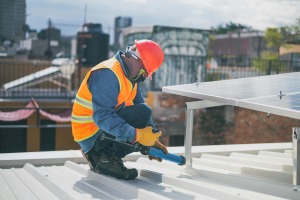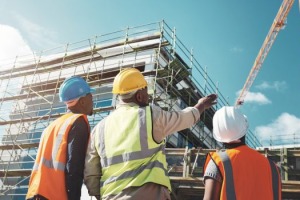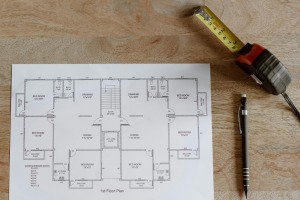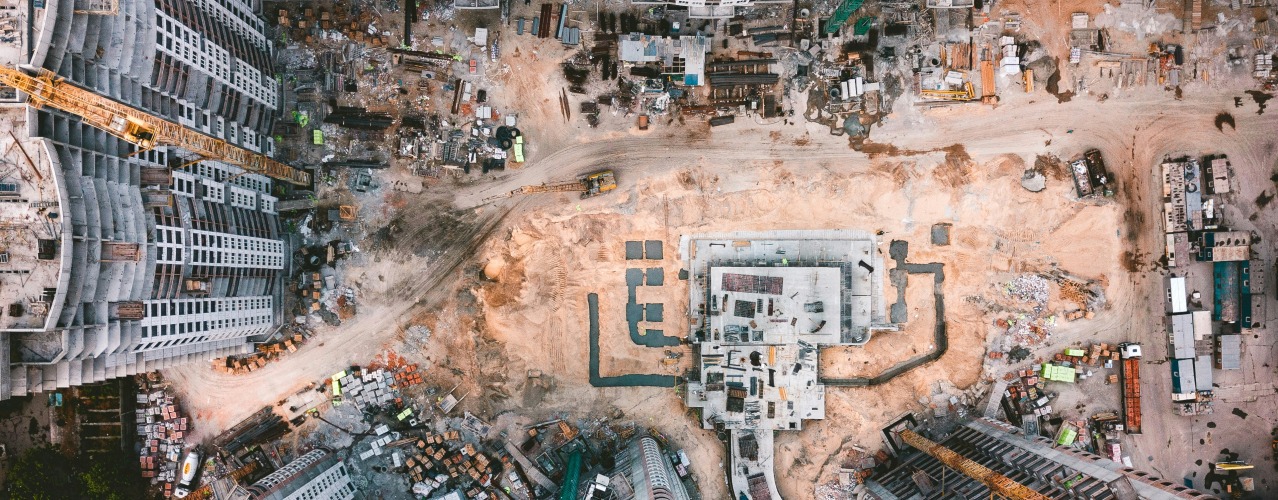


Market report
Prefab & Innovation in Architecture
The European Architectural Barometer examines the rise of prefab construction, analyzing adoption rates, market potential, and challenges across Europe.
Blogs I published 28 August 2024 I Dirk Hoogenboom
Prefab Trends in Construction Industry
Prefab has been making waves in the construction industry for a while now. While the concept isn’t entirely new, recent advancements in technology – along with a growing demand for sustainable and efficient building methods – have pushed it front-and-center, so there’s good reason to take a closer look at what’s driving this uptick. With labor shortages, rising material costs and urban landscapes developing exponentially, prefab offers a way to build smarter and faster. How? Keep reading for a long-term forecast, backed by fresh data and reports.
The Rise of Prefab
To cover some familiar ground, the construction industry is looking to become faster, cheaper and better. This can be done in several ways, and prefabrication is gaining traction as it covers all three factors with ease. Tracing it back through past decades, we clearly see an extensive and steady increase in prefab. Here’s why.
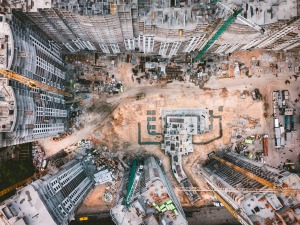

Prefab Trends and Forecasts
Nowadays, its popularity is first and foremost impacted by a very high labor shortage. Less hands to build mean a retrofit in approaches to building in general, and prefab sets the bar pretty high by reducing on-site labor, increasing efficiency and improving quality.
The industry has – in the last couple of years – swayed rapidly towards digitalization. Say you’re an architect: prefab done right means accurate BIM, impossible without digital resources. Furthermore, looking at Europe, especially the North, an acute housing shortage driven by inflation rates, high investment and construction costs have created high demand, meaning the industry is overdue for an increase in construction speed. New and emerging tech is allowing for upgrades to standard builds scopes, and with these upgrades, prefab too grows strong. Last, but by no means least, a continued emphasis on eco-friendly and green practices makes a strong case for prefabrication, a conscious and efficient practice.
Material Usage
Ongoing shifts in trends of material usage are highly pronounced in prefab. Wood-based solutions are on the rise, a topic we’ve gone over in detail, with architects demonstrating an overwhelming preference for timber in fully finished façades (40%), inner walls (43%) and pitched roofs (55%). A well-known favourite, concrete, follows with 29%, 19% and 11% respectively.
As far as contractors are concerned, concrete is the dominant material when it comes to prefabricated plain and unfinished elements.
Projections
All things considered – as per architects and contractors – short-term projections don’t predict a strong increase in prefab. It’s expected to continue with either limited growth, similar to the slight increase from 2019’s 28% to 2023’s 29%, or a drop before increasing in the next couple of years.
Key reasons for this slower pace have to do with the European trend of less new build volumes and more renovation. Higher interest rates turn into difficulties with financing, impacting the total project mix. Complex and aesthetic-oriented designs are on the rise, but they aren’t cookie-cutter-friendly, so prefab can’t always keep up with more demanding projects. Urbanization and high-rise are increasing, presenting potential obstacles for prefab, mostly a low to mid-rise game (however this, too, is turning for the better).
Take Germany as a benchmark. The forecast of building volumes since 2022 and into 2024 marks a significant drop in new construction (from 100.2 to 86.2), with renovation marking slight increases (186.4 in 2022, 188.9 in 2023 and 189.4 in 2024). Meaning – short-term prefab usage will grow.
Mid-term or long-haul, however, the adoption rate is projected to accelerate greatly, up to 33% in 2025, and 39% come 2030 throughout Europe (Germany, Italy, The Netherlands, Spain, Poland…). Looking deeper into the value chain, a vast majority of prefab users (HVAC installers for example) expects an increase in prefab shares, with non-users foreseeing considerable growth as well.
Potential Obstacles
Prefabrication, while promising, isn’t without challenges and faces several potential setbacks.
Conservative Industry
Contractors are either slow or reluctant to adapt, relying mostly on tried-and-true approaches to building practices, essentially meaning that they prefer business as usual to newer concepts. Introducing prefab to an industry set in its ways will be an ongoing task.
Rules and Regulations
Next, it’s easy – well, easier – to prefabricate elements for a building of 0-5 floors. Anything over that is difficult, and this has to do with regulatory limitations, prefab standards, a higher cost of entry or similar red-tape aspects that restrict design options and increase costs, ultimately discouraging contractors from adopting it.
Urban Challenges
Prefabrication can face challenges in large urban areas due to transportation logistics and potential disruptions. Think about the greater London area. Moving large prefab components through crowded cities, or setting them up, can be tricky, especially with construction sites impacting local life. Implementing prefab successfully requires careful urban consideration.
Integration
While new construction presents opportunities for prefab, the potential for growth in renovation projects is even greater. Smoothly integrating prefab with existing structures to meet the unique requirements of renovation projects still remains a challenge.


Revolutionizing the Prefab Process
Change, however, is underway and much can be done to update prefabrication and unlock its full potential. Key aspects of these adjustments have to do with streamlining the process, reduce labor and increase efficiency.
Automation and Robotics
In order to get serious gains in productivity levels, the prefab production needs to become more industrialized. In many cases, we still need qualified labor and a lot of man-hours to deliver, so we’re looking into advancements in robotics and automation (for instance cutting, assembling or finishing) in order to perform more efficiently. This automation can lead to lower skill requirements, making prefab construction more accessible to a wider workforce.
Volumetric Construction
Think of it like building a house with pre-assembled blocks. Instead of constructing parts of the building, or the building itself on-site, volumetric construction involves prefabricating entire modules, including finished elements like walls, ceilings, floors, windows, doors, paint jobs, coating or entire electrical systems. This level of prefabrication offers even greater efficiency and reduces the need for on-site finishing work.
3D-Printing
The ultimate goal is to use 3D printing to create entire houses off-site. This shift is currently slow, but is highly anticipated and needed, as the technology has the potential to revolutionize the industry. By enabling highly customized and efficient building processes, addressing labor shortages and improving productivity, 3D-prints are very much on the radar, while also offering opportunities for innovative designs and sustainable material usage (most prominently wood).
Key Takeaways
Our data shows that construction is coming in all prefabricated, for a number of reasons. First off, labor shortages will inevitably drive the market towards more prefab. Next, we’re already seeing higher levels of industrialization, which will significantly improve the benefits of going prefab, thus increasing adoption levels and speeds. With legislation demands met and technological advancements made, prefab will exhibit even more potential to grow in mid- and high-rise construction. Lastly, European trends show that an increase in digitalization will facilitate and accommodate more complex designs, so prefab is getting a strong and much needed boost.
Sustainability
An increase in sustainability efforts will drive the uptick forward strongly – how? Prefab construction can lead to up to 90% reduction in material waste compared to on-site construction, not to mention that these projects are initially designed with more energy efficiency in mind. Streamlined production means less energy consumption and a growing preference for sustainable materials and viable alternatives for typical materials will lead to a lower carbon footprint. Lastly, prefab construction significantly reduces overall construction time, reducing prolonged emissions.


Want to stay ahead of the curve? Our webinars and blogs offer valuable insights into the latest prefab trends, so be sure to check them out and find out how to leverage them to your advantage.
Construction Consulting Services for You
We provide tailor-made market research and off-the-shelf reports, both B2B & B2C, qualitative and quantitative. Here are some you might be interested in
Assess the potential of prefab solutions and discover emerging applications in construction.
Refine your prefab offerings with research-driven insights for improved efficiency and adoption.
Identify the factors fueling prefab growth and how to leverage them for market success.

Read more

Fresh Insights Await
Our relevant reports
Delve into the newest findings across various market segments, crafted for a cutting-edge overview. Explore our insightful reports, brimming with up-to-date data, trend analyses, and in-depth examinations, all tailored to provide you with a comprehensive understanding of the current market dynamics.
Construction
Home Improvement
Installation
Special reports










